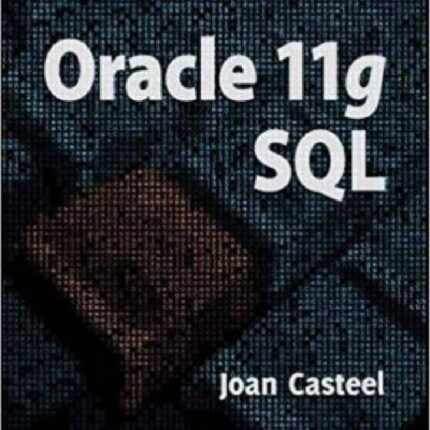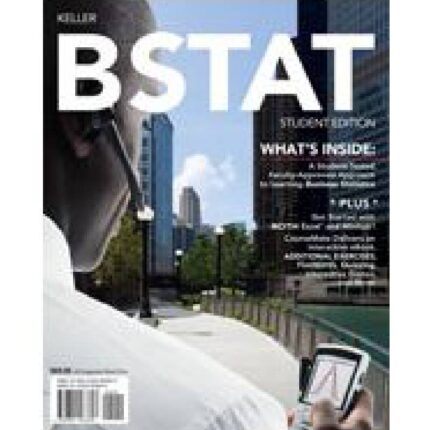Basic Business Statistics 13th Edition By Mark – Test Bank
CHAPTER 11: ANALYSIS OF VARIANCE
1. In a one-way ANOVA, if the computed F statistic is greater than the critical F value you may
a) reject H0 since there is evidence all the means differ.
b) reject H0 since there is evidence that not all the means are different.
c) not reject H0 since there is no evidence of a difference in the means.
d) not reject H0 because a mistake has been made.
ANSWER:
b
TYPE: MC DIFFICULTY: Easy
KEYWORDS: one-way analysis of variance, decision
2. Which of the following components in an ANOVA table are not additive?
a) Sum of squares.
b) Degrees of freedom.
c) Mean squares.
d) It is not possible to tell.
ANSWER:
c
TYPE: MC DIFFICULTY: Easy
KEYWORDS: one-way analysis of variance, sum of squares, properties
3. When would you use the Tukey-Kramer procedure?
a) To test for normality.
b) To test for homogeneity of variance.
c) To test independence of errors.
d) To test for differences in pairs of means.
ANSWER:
d
TYPE: MC DIFFICULTY: Easy
KEYWORDS: Tukey-Kramer procedure, randomized block design
4. A completely randomized design
a) has only one factor with several treatment groups.
b) can have more than one factor, each with several treatment groups.
c) has one factor and one block.
d) has one factor and one block and multiple values.
ANSWER:
a
TYPE: MC DIFFICULTY: Moderate
KEYWORDS: completely randomized design
5. The F test statistic in a one-way ANOVA is
a) MSW/MSA.
b) SSW/SSA.
c) MSA/MSW.
d) SSA/SSW.
ANSWER:
c
TYPE: MC DIFFICULTY: Easy
KEYWORDS: one-way analysis of variance, F test for factor
6. The degrees of freedom for the F test in a one-way ANOVA are
a) (n – c) and (c – 1).
b) (c – 1) and (n – c).
c) (c – n) and (n – 1).
d) (n – 1) and (c – n).
ANSWER:
b
TYPE: MC DIFFICULTY: Easy
KEYWORDS: one-way analysis of variance, F test for factor, degrees of freedom
7. In a one-way ANOVA, the null hypothesis is always
a) there is no difference in the population means.
b) there is some treatment effect.
c) all the population means are different.
d) some of the population means are different.
ANSWER:
a
TYPE: MC DIFFICULTY: Easy
KEYWORDS: one-way analysis of variance, form of hypothesis
8. In a one-way ANOVA
a) an interaction term is present.
b) an interaction effect can be tested.
c) there is no interaction term.
d) the interaction term has (c – 1)(n – 1) degrees of freedom.
ANSWER:
c
TYPE: MC DIFFICULTY: Moderate
KEYWORDS: one-way analysis of variance, properties, interaction
. An airline wants to select a computer software package for its reservation system. Four software
packages (1, 2, 3, and 4) are commercially available. The airline will choose the package that
bumps the fewest mean number of passengers as possible during a month. An experiment is set
up in which each package is used to make reservations for 5 randomly selected weeks. (A total of
20 weeks was included in the experiment.) The number of passengers bumped each week is
given below. How should the data be analyzed?
Package 1: 12, 14, 9, 11, 16
Package 2: 2, 4, 7, 3, 1
Package 3: 10, 9, 6, 10, 12
Package 4: 7, 6, 6, 15, 12
a) F test for differences in variances.
b) One-way ANOVA F test.
c) t test for the differences in means.
d) t test for the mean difference.
ANSWER:
b
TYPE: MC DIFFICULTY: Easy
KEYWORDS: one-way analysis of variance, F test for factor
10. True or False: The analysis of variance (ANOVA) tests hypotheses about the population
variance.
ANSWER:
False
TYPE: TF DIFFICULTY: Easy
KEYWORDS: one-way analysis of variance













Reviews
There are no reviews yet.